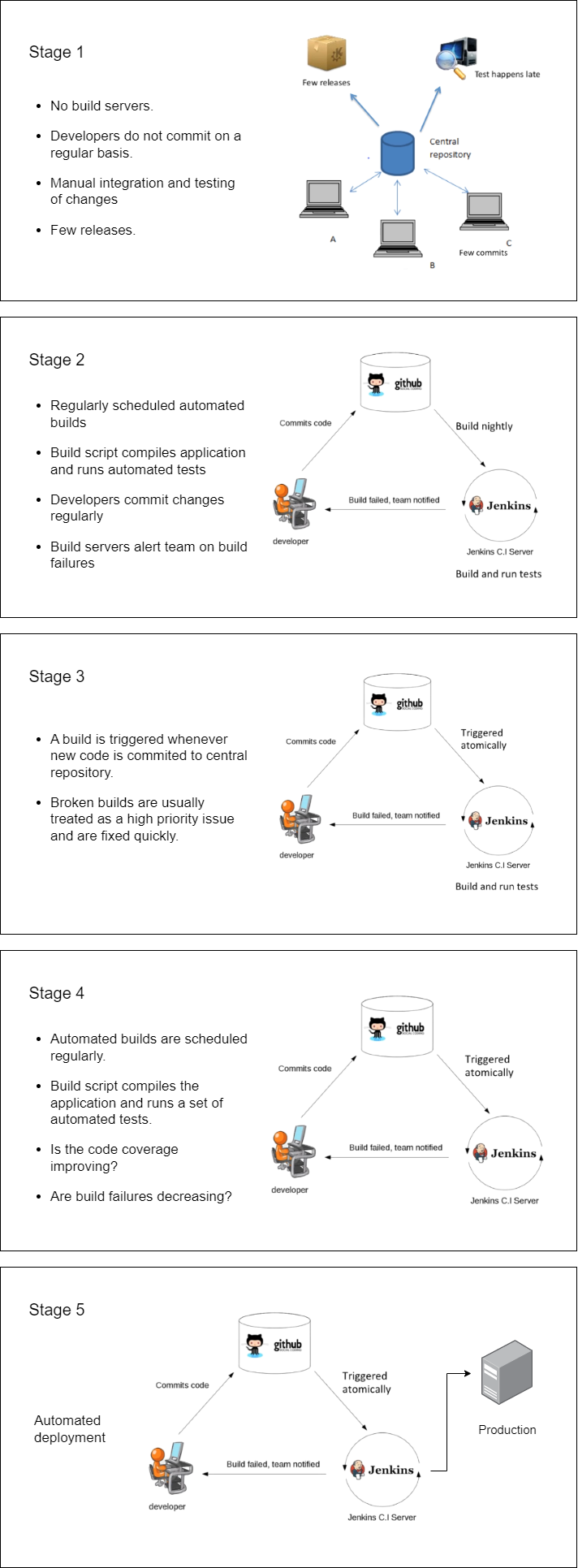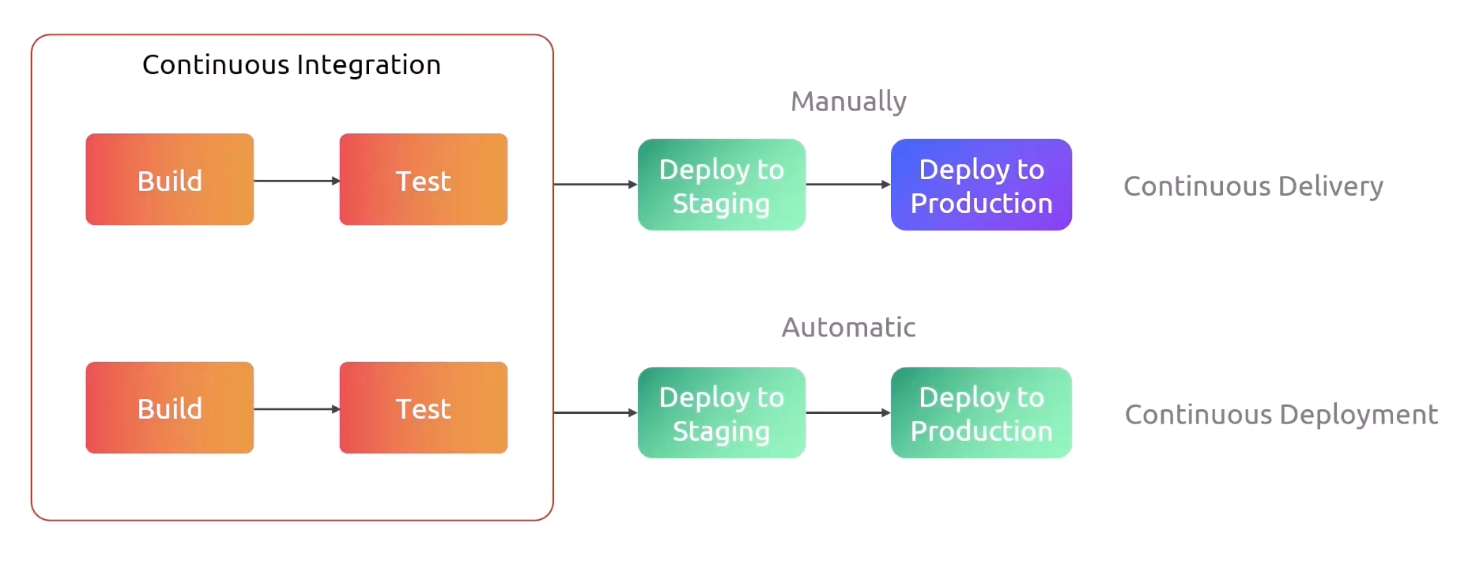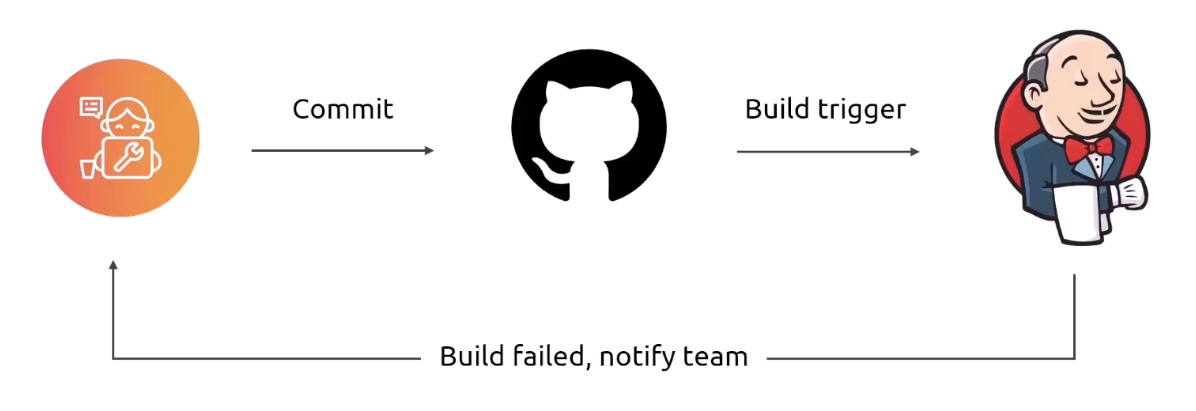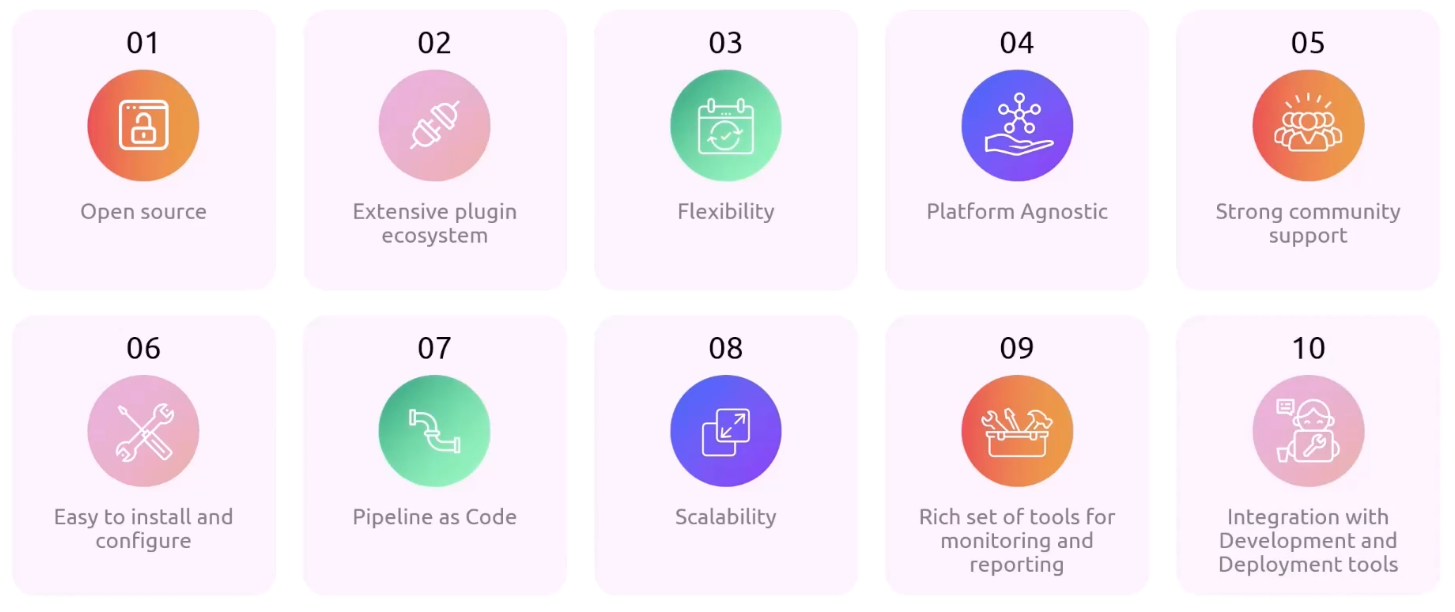Adopting Continuous Integration
Updated May 13, 2020 ·
Stages in Adopting Continuous Integration

Continuous Integration/Continuous Deployment
Continuous Integration (CI) automates building and testing code with each commit, catching issues early. Continuous Deployment (CD) automates releasing code to production, making updates faster and more reliable. Together, CI/CD streamlines software delivery and improves quality.

For more information, please see CICD Overview.
Jenkins
Jenkins is an open-source automation server used to build, test, and deploy applications efficiently.
- Supports continuous integration and continuous delivery.
- Easy setup and management of automated build pipelines.
- Integrates with many tools and platforms for seamless workflows.
How it works:
- Developers commit code to the code repository.
- The commit automatically triggers a build in Jenkins.
- Jenkins will through the code and perform the operations.
- These operation include linting, testing, building, and packaging the code.
- If the build fails, Jenkins send a notification to the team.
- Developers fixed the code, commit the change, and Jenkins get triggered.
These steps repeat until the code passes and Jenkins deploys the code to the environment.

Why Jenkins?
